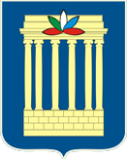Fiber-optic equipment and technologies
FOUNDER
V.A. Novikov, Doctor of Engineering, Professor
RESEARCH FELLOWS
A.V. Kushner, PhD in Engineering,
A.P. Magilinsky, PhD in Engineering,
V.A. Romanov, PhD in Engineering,
G.I. Skryabina, PhD in Engineering,
A.V. Shilov, PhD in Engineering.
MAIN RESEARCH TASKS
- development of theoretical foundations of magnetographic non-destructive inspection with stray magnetic fields being recorded on a double-layer and monolithic tape;
- development of highly effective techniques of magnetization, magnetic and magnetographic inspection of ferromagnetic objects;
- development of standards for the magnetic inspection of welded joints;
- elaboration of techniques to increase sensitivity, resolution and selectivity of magnetic inspection of ferromagnetic objects;
- development of the theoretical foundation of the magnetographic inspection method, which is based on magnetization of objects with a movable permanent magnet via a magnetic carrier;
- development of the methodological support for the magnetographic inspection method, which is based on magnetization of objects with a movable permanent magnet via a magnetic carrier;
- development of theoretical basics of the magnetic inspection with magnetic fields being recorded on the magnetic field viewing film;
- development of methods for quantitative assessment of flaws by computer processing of indication patterns produced on the magnetic field viewing film;
- development of engineering tools for the magnetographic inspection of ferromagnetic objects.
CENTERS AND LABORATORIES
Electromagnetic Inspection Laboratory (а. 507, building 2)
MAIN RESEARCH FINDINGS AND COMMERCIAL OFFERS
Main research findings:
- the calculation method, which confirms the obtained experimental patterns of signal transformation and its polarity change caused by the flaw in an object magnetized with a movable permanent magnet;
- the computer program which allows the images of fields of the most dangerous flaws to be distinguished on the monitor screen from the images of other defects;
- the method of magnetographic inspection used to distinguish the most dangerous flaws (cracks and narrow discontinuities) from the other ones (scratches and indentations due to surface irregularities) by the type of a signal;
- the technique that allows the quantitative assessment of the defect based on its indication pattern on the magnetic field viewing film;
- the method for inspecting steel castings with wall thickness up to 30 mm without finishing treatment of the inspected surface with defect fields being recorded on the magnetic field viewing film;
- the method of magnetic inspection of coated springs;
- techniques of magnetization and magnetic and magnetographic inspection, which ensure a 4-5-fold increase in sensitivity of the magnetic method while inspecting welded joints for the presence of typical weld defects in them, a 10- to 40-fold higher resolution, and the weight of magnetizing devices is reduced by dozens of times.
CONTACT DETAILS FOR THE HEAD OF THE SCIENTIFIC SCHOOL
Vladimir Aleskeyevich Novikov
Phone: +375222225212
Fax: +375222225212
E-mail:
